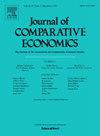一盎司的预防抵得上十分的治疗吗?来自中国大规模疫苗接种实验的证据
IF 3.1
2区 经济学
Q1 ECONOMICS
引用次数: 0
摘要
发展中国家公共资助的免疫规划是否具有成本效益?为了回答这个问题,我们在中国进行了一项大规模实验,以评估流感和肺炎球菌疫苗对老年慢性阻塞性肺疾病(COPD)患者的成本效益。与对照组相比,接种疫苗的患者的慢性阻塞性肺病病情有所改善,这导致他们的医疗支出(公共医疗保险报销和自付费用)大幅减少。我们保守的差异中差异估计表明,用于免费接种疫苗的每一美元至少减少了10至33美元的公共医疗保险报销,并减少了15至46美元的总医疗支出。通过比较受益人,我们发现70岁及以上的患者、COPD症状更严重的患者以及居住在农村地区的患者从免疫接种中受益最大。我们的研究结果揭示了公共免疫规划的长期可行性,以及哪些人应该优先接种疫苗。本文章由计算机程序翻译,如有差异,请以英文原文为准。
Is an ounce of prevention worth a pound of cure? Evidence from a large-scale vaccination experiment in China
Can publicly-funded immunization programs in developing countries be cost-effective? To answer this, we run a large-scale experiment in China to estimate the cost-effectiveness of influenza and pneumococcal vaccines on elderly patients with chronic obstructive pulmonary diseases (COPD). Vaccinated patients – relative to the control group – experienced improvements in their COPD condition, which led to a substantial decrease in their medical expenditure (public medical insurance reimbursements and out-of-pocket expenses). Our conservative difference-in-differences estimates imply that every dollar spent making vaccination freely available reduced public medical insurance reimbursements by at least 10 to 33 dollars, and reduced total medical expenditure by 15 to 46 dollars. Comparing across beneficiaries, we find that patients aged 70 and above, those with more severe COPD symptoms, and those residing in rural areas, benefitted the most from immunization. Our results shed light on the long-run viability of public immunization programs, and for whom should immunization be prioritized.
求助全文
通过发布文献求助,成功后即可免费获取论文全文。
去求助
来源期刊

Journal of Comparative Economics
ECONOMICS-
CiteScore
4.40
自引率
0.00%
发文量
66
审稿时长
45 days
期刊介绍:
The mission of the Journal of Comparative Economics is to lead the new orientations of research in comparative economics. Before 1989, the core of comparative economics was the comparison of economic systems with in particular the economic analysis of socialism in its different forms. In the last fifteen years, the main focus of interest of comparative economists has been the transition from socialism to capitalism.
 求助内容:
求助内容: 应助结果提醒方式:
应助结果提醒方式:


